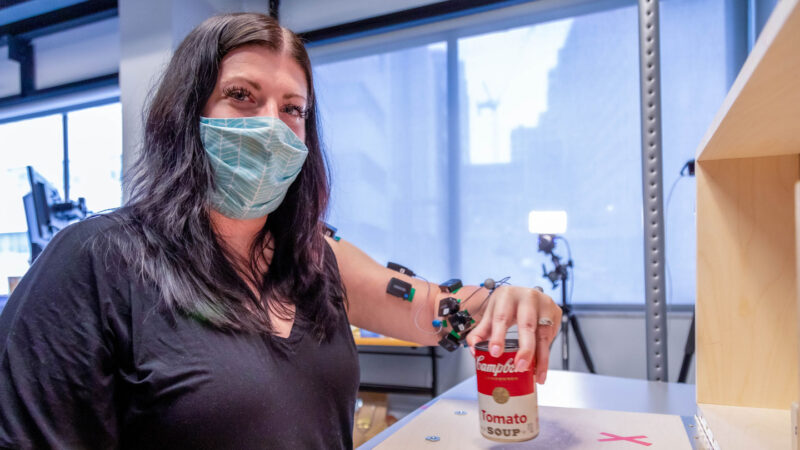Sitting in an exam room, surrounded by doctors and scientists, Heather Rendulic opened her left hand for the first time since suffering a series of strokes nine years earlier when she was in her early 20s.
“It was an amazing feeling for me to be able to do that again,” Rendulic says. “It’s not something I ever thought was possible.”
But immediately after a surgically implanted device sent electrical pulses into her spinal cord, Rendulic could not only open her hand but also showed other marked improvements in arm mobility, researchers report February 20 in Nature Medicine. “We all started crying,” Marco Capogrosso, a neuroscientist at the University of Pittsburgh, said in a February 15 news conference. “We didn’t really expect this could work as fast as that.”
Science News headlines, in your inbox
Headlines and summaries of the latest Science News articles, delivered to your email inbox every Thursday.
Thank you for signing up!
There was a problem signing you up.
The approach is similar to that recently used for patients paralyzed by spinal cord injuries (SN: 08/03/22). It represents a promising new technique for restoring voluntary movement to those left with upper-body paralysis following strokes, the team says.
A stroke occurs when blood supply to parts of the brain is cut off, often causing short-term or long-term issues with movement, speech and vision. Stroke is a leading, and often underappreciated, cause of paralysis; in the United States alone, 5 million people are living with some form of motor deficit due to stroke. While physical therapy can provide some improvements, no treatment exists to help these patients regain full control of their limbs — and their lives.
Strokes cause paralysis because the connection between the brain and the spinal cord is damaged; the brain tries to tell the spinal cord to move certain muscles, but the message is muddled.
So, taking advantage of techniques already existing for spinal injections of anesthetics, the team invented an electrical device that can be placed along the spinal cord to stimulate the nerves there. The stimulation “does not hurt whatsoever,” Rendulic says. “It feels like a vibration.”
By aligning the electrodes on the device with sensory nerves, “we can enhance the activation of muscles that are weakened by the stroke,” Douglas Weber, an engineer and neuroscientist at Carnegie Mellon University in Pittsburgh, said at the news conference. Pulses from these electrodes seek to amplify signals from the brain, so that the sensory nerves respond by activating muscles, restoring voluntary body control to patients.
Rendulic and the other patient in the study both showed improvement in mobility tasks, including drawing a spiral, opening a lock and gripping and lifting a soup can while the device was on. Treatment sessions of continuous electrical stimulation were held for four hours per day, five days a week, over 29 days, and the improvements persisted for as long as four weeks after treatment stopped. This makes the researchers optimistic that they can get even stronger results if the treatment were paired with intensive physical training, Elvira Pirondini, a neuroscientist at the University of Pittsburgh, said at the news conference.
She and the rest of the team are actively testing the device with other patients, and also exploring if pairing it with physical training can improve outcomes. The researchers are hopeful that it will be widely accessible because the surgery to implant it is minimally invasive and routine, and the value of the procedure can be clearly demonstrated, which is important to convince insurance companies to cover it.
Subscribe to Science News
Get great science journalism, from the most trusted source, delivered to your doorstep.
The treatment might not work well for patients with severe mobility impairment, says UCLA neurologist Bruce Dobkin, who was not involved with the study. But it could serve as a “new tool to try to maximize the recovery” of stroke patients with more moderate paralysis, in combination with other therapies.
For Rendulic, the proven potential of using spinal cord stimulation to treat paralysis caused by stroke gives her hope for the future. “I really hope and pray that this becomes widely available,” she says, “because I know it’s going to change so many lives.”


